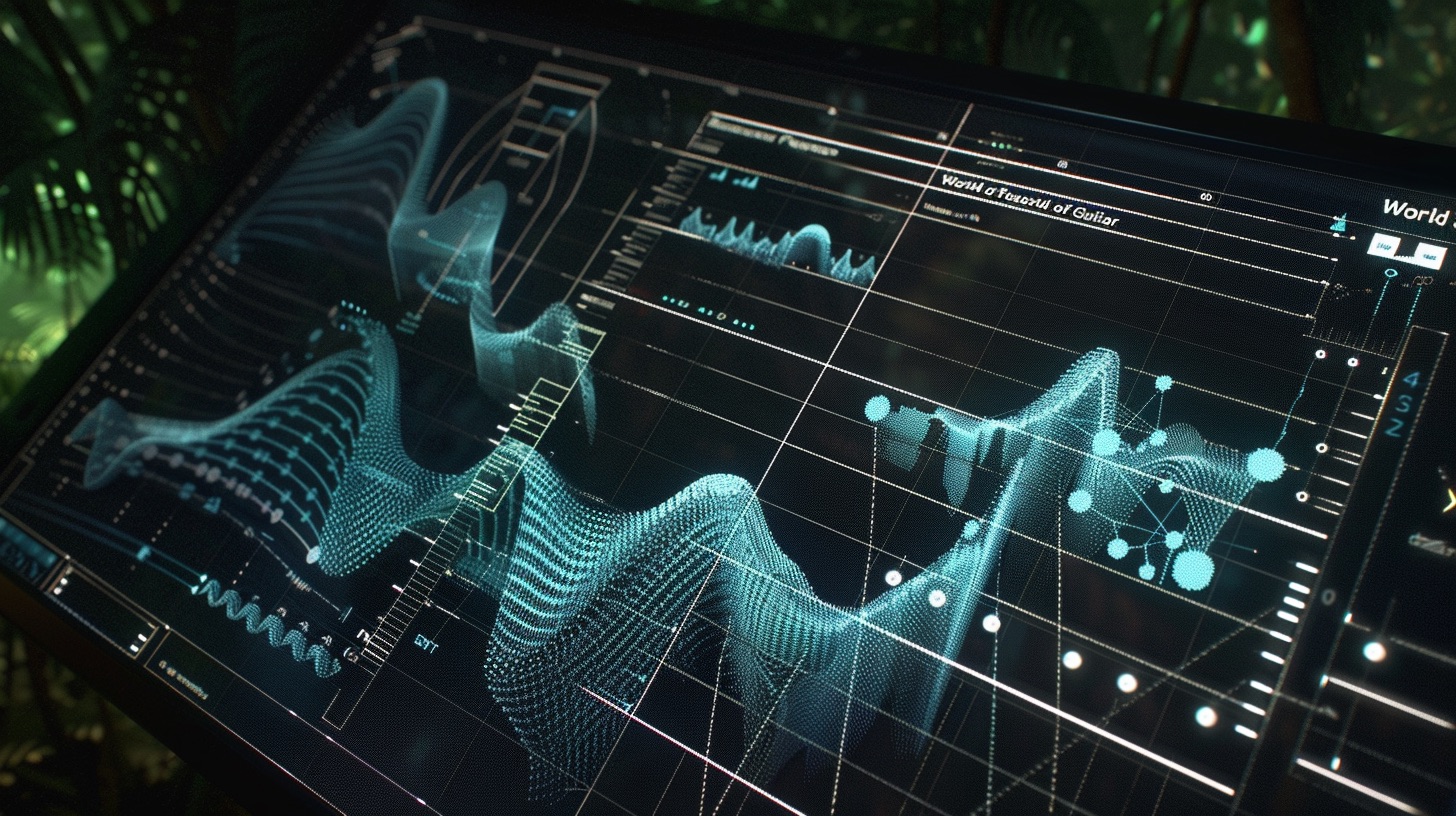
What Does EQ Mean? Shaping Brutal Metal Tones
Nail The Mix Staff
So, you’ve heard the term "EQ" thrown around a million times. Maybe you tweak it on your amp, mess with it in your DAW, but do you really know what EQ means for your metal mixes and how to harness its full power? EQ, or equalization, is way more than just a fancy tone knob. It’s one of the most crucial tools in a metal producer's arsenal, capable of transforming a muddy, chaotic mess into a clear, punchy, and aggressive masterpiece.
Forget just knowing the definition. We're diving deep into what EQ means in the context of heavy music – how to wield it to make your guitars chug harder, your drums slam, and your vocals cut through the delightful cacophony. If you're ready to move beyond basic presets and start sculpting truly professional metal sounds, let's get into it.
The Nitty-Gritty: EQ Explained for Metalheads
At its core, EQ is about adjusting the balance of different frequencies in your audio. Think of it like a highly sophisticated set of volume controls, but instead of just "louder" or "quieter" for the whole track, you're controlling the volume of specific sonic ranges.
Beyond Just "Bass, Mids, Treble": Understanding Frequencies
Every sound is made up of a spectrum of frequencies, measured in Hertz (Hz). For metal, understanding these ranges is key:
- Low End (Sub Bass & Bass ~20Hz – 250Hz): This is where the gut-punch of your kick drum and the fundamental weight of your bass guitar live. Too much, and you get mud; too little, and your mix sounds thin and weak. Think the earth-shattering drop D chugs of a Meshuggah track – that's controlled low-end power.
- Low Mids (~250Hz – 500Hz): The "body" or "warmth" region. Crucial for guitar thickness and snare body, but also a notorious mud zone. This is often where you'll be doing some serious carving to prevent your downtuned guitars from clashing with the bass.
- Midrange (~500Hz – 2kHz): This is where the aggression, growl, and clarity of guitars often sit. Vocals also have a lot of information here. Too much can sound "honky" or "boxy" (think old telephone effect), but cutting too much can make guitars disappear.
- Upper Mids (~2kHz – 6kHz): Presence, attack, and intelligibility. This is where you find the "snap" of the snare, the "click" of the kick beater, the pick attack on guitars, and the clarity of vocals. Too much can be harsh and fatiguing. That piercing guitar fizz you hate? Often lurking here or slightly higher.
- High End (Treble & Air ~6kHz – 20kHz): Sizzle, brightness, and "air." This affects cymbal shimmer, vocal breathiness, and overall clarity. Too much leads to a thin, brittle sound or that dreaded "digital harshness."
The Main EQ Controls and What They Actually Do
When you open up an EQ plugin, like the stock EQ in Logic Pro X or Reaper's ReaEQ, or a more advanced one like FabFilter Pro-Q 3, you'll typically see these controls:
Frequency
This is where you select the specific frequency (or center of a frequency range) you want to affect. Want to cut mud from a guitar? You might target something around 300Hz. Need more snap from your snare? You might look around 5kHz.
Gain
Simple enough: this is how much you boost (increase volume) or cut (decrease volume) the selected frequency. Measured in decibels (dB). A +3dB boost at 100Hz on a kick drum will make that frequency louder. A -6dB cut at 400Hz on a rhythm guitar will reduce its "boxiness."
Q (Bandwidth)
This is super important and often misunderstood. The Q factor determines how wide or narrow the range of frequencies around your selected center frequency will be affected.
- Narrow Q (High Q value): You’re affecting a very small, specific band of frequencies. Perfect for surgical cuts – like notching out a nasty ringing frequency in a tom or a piercing whistle from a cymbal. Think of it like a laser beam.
- Wide Q (Low Q value): You’re affecting a broader range of frequencies. Ideal for general tone shaping – like a gentle lift to brighten up an entire mix or a broad scoop in the mids of a guitar. Think of it like a floodlight.
Filter Types
These determine the shape of your EQ adjustment:
- High-Pass Filter (HPF) / Low-Cut: Attenuates (rolls off) all frequencies below a set point. Essential in metal for cleaning up low-end rumble from virtually everything except kick and bass. You’d be surprised how much mud you can remove by HPF’ing guitars at 80-120Hz, or even higher for vocals and cymbals.
- Low-Pass Filter (LPF) / High-Cut: Attenuates all frequencies above a set point. Great for taming harsh cymbals, removing unwanted fizz from distorted guitars (that nasty stuff way up high, sometimes above 10kHz), or giving sounds a darker, more distant vibe.
- Bell Filter (Peak/Dip): The most common type. Boosts or cuts frequencies around a center point, with the Q determining the width of the bell shape. Used for most tonal adjustments and surgical cuts.
- Shelf Filter (High Shelf / Low Shelf): Boosts or cuts all frequencies above (high shelf) or below (low shelf) a set point, up to a certain level, then flattens out. Great for adding overall brightness (high shelf on a mix bus) or weight (low shelf on a bass guitar).
EQ in Action: Carving Your Metal Masterpiece
Knowing what the knobs do is one thing; using them effectively is another. Here’s how these concepts apply to making your metal tracks sound huge.
Surgical EQ: The Metal Producer’s Scalpel
This is all about precision problem-solving. Got a snare drum that has an annoying "ping" every time it’s hit?
- Grab a parametric EQ plugin like FabFilter Pro-Q 3 (its spectrum analyzer is a godsend for this).
- Create a bell filter with a very narrow Q (high Q value) and a significant boost (say, +10dB).
- Slowly "sweep" this boosted frequency across the spectrum while the snare plays.
- Listen for when the annoying ring really jumps out. That’s your problem frequency.
- Now, simply flip that boost into a cut. Adjust the depth of the cut and the Q until the ring is tamed without thinning out the snare too much. Common culprits for snare ring are between 400Hz and 1kHz.
This same technique works for:
- Taming guitar fizz: That harsh, static-like noise often found between 3kHz-8kHz. Narrow cuts here can clean things up immensely without losing aggression.
- Reducing "boxiness" in kicks or toms: Often found in the 300-600Hz range.
- Controlling piercing cymbal overtones: These can live anywhere from 2kHz upwards.
- De-essing vocals (manually): If your vocalist’s "S" sounds are too sharp, find that sibilant frequency (usually 5kHz-10kHz) and make a narrow cut when it occurs (or use a dynamic EQ/de-esser plugin).
Tonal Shaping: Broad Strokes for Brutality
This is where you use wider Q settings to shape the overall character of your instruments.
- The Classic Metal Guitar Mid-Scoop: Yes, it’s a bit of a cliché, but it works for a reason – it makes space for vocals and snare. Try a broad cut of 3-6dB with a Q around 0.7 to 1.0 somewhere between 300Hz and 1kHz on your rhythm guitars. An SSL E-Channel style plugin, like the Waves SSL E-Channel or Brainworx bx_console SSL 4000 E, excels at this with an aggressive character. Don’t just scoop blindly though; listen to how it interacts with the bass and kick.
- Kick Drum Attack & Body: Need more "thwack" or "click" from the beater? Try a moderate boost (2-4dB) with a medium Q somewhere between 3kHz and 6kHz. For more low-end punch or "oomph," look to boost around 60-100Hz.
- Snare Drum Punch & Fatness: A boost around 5kHz can add crack, while a boost in the 150-250Hz region can add body and weight.
- Adding "Air" or Brightness: A gentle high-shelf boost starting around 8-12kHz can open up vocals, cymbals, or even the entire mix bus. Be careful not to make things harsh. Plugins emulating Pultec EQs (like the Waves PuigTec EQP-1A) are famous for their smooth high-end boosts.
EQ for Separation: Making Space in a Dense Metal Mix
Metal mixes are crowded. Guitars, bass, drums, vocals – all fighting for space. EQ is your primary tool for giving each element its own sonic territory. This is often referred to as "frequency slotting."
- HPF Everything (Almost!): As mentioned, use high-pass filters aggressively. Guitars often don’t need much information below 80-100Hz (especially if you have a bass guitar holding down the low end). Vocals can often be high-passed up to 100-150Hz. This cleans up so much low-end mud and creates room for your kick and bass to breathe.
- The Guitar/Bass Relationship: This is critical in metal. If your guitars are tuned low, they’ll occupy a lot of the same frequency range as the bass. A common technique is to find the fundamental frequencies of the bass guitar (e.g., if it’s mostly playing around 60-120Hz) and then make some corresponding gentle cuts in the guitars in that same region (or slightly above, say 150-250Hz) to make space. Conversely, if your bass has a lot of nice upper-mid growl, you might slightly dip the guitars in that area.
- Complementary EQing: If you boost a frequency on one instrument, consider cutting that same frequency (or a nearby one) on another instrument that might be clashing with it. For a deeper dive into these kinds of strategies, our EQ hub page: Carve Your Core: EQ Strategies for Mixing Modern Metal has tons of insights.
EQ Philosophies: Additive vs. Subtractive (and Why Metal Needs Both)
You’ll often hear the advice: "Cut before you boost." This is generally solid. It’s often better to remove problematic frequencies or carve out space (subtractive EQ) than to just keep boosting things to make them heard (additive EQ), which can lead to a harsh, unbalanced mix and eat up headroom.
However, metal often demands aggressive boosting to get that larger-than-life sound. Boosting the attack on a kick, the sizzle on cymbals, or the presence in a guitar solo can be essential. The key is balance and intentionality. Ask yourself why you're boosting. Are you enhancing something good, or trying to fix a problem that a cut might solve better?
Not All EQs Are Created Equal: Choosing Your Weapon
There are tons of EQ plugins out there, and they generally fall into two camps:
Digital Precision: The Modern Metal Standard
Plugins like FabFilter Pro-Q 3, Logic’s Channel EQ, or Reaper’s ReaEQ offer incredible flexibility.
- Benefits: Visual feedback from spectrum analyzers, almost unlimited bands, precise Q control, features like dynamic EQ (where the EQ cut/boost only happens when a certain frequency passes a threshold – amazing for taming intermittent harshness), and mid/side processing. They are the go-to for surgical work and clean, transparent tonal shaping.
Analog Character: The "Vibe" Factor
These plugins emulate classic hardware EQs and are prized for the subtle (or not-so-subtle) sonic coloration they impart.
- Pultec EQP-1A Style (e.g., Waves PuigTec EQP-1A, Softube Tube-Tech PE 1C): Famous for its broad, musical curves and the "Pultec trick" – simultaneously boosting and attenuating the same low frequency for a tight, punchy bottom end. Great on kick drums, bass, or even the mix bus.
- Neve 1073 Style (e.g., Waves Scheps 73, Slate Digital VMR's FG-N): Known for its thick, warm, and slightly aggressive character. Fantastic for adding mojo to guitars, vocals, and drums. The high-shelf is legendary.
- SSL E-Channel/G-Channel Style (e.g., Waves SSL E-Channel, Brainworx bx_console SSL 4000 E/G): The sound of countless rock and metal records. Punchy, aggressive, and great for shaping drums and guitars. The filters are very distinctive.
You don’t need expensive analog emulations to make great metal, but they can add a desirable flavor that clean digital EQs might not. Many pros use a combination: digital EQs for surgery, analog emulations for color.
EQ and Other Processes: The Dynamic Duo (and Trio!)
EQ doesn’t exist in a vacuum. It interacts heavily with other processing, especially compression.
- EQ Before Compression: Shaping the tone before it hits the compressor means you’re influencing what the compressor reacts to. For example, if you HPF a vocal before compressing, the compressor won’t be triggered by unwanted low-end rumble. If you boost highs before compression, those highs might get clamped down more.
- EQ After Compression: Compression can often change the tonal balance of a signal (e.g., making it sound darker or duller). EQing after compression can help restore lost frequencies or further refine the tone.
- Many engineers use both: an EQ before to clean up and shape, and an EQ after to polish. Understanding this relationship is crucial, and you can learn more on our Compression hub page: Metal Compression Secrets: Beyond Just Making It Loud.
EQ also works hand-in-hand with saturation and distortion. For example, you might EQ a guitar signal before it hits an amp sim or a distortion plugin (like a digital Tube Screamer) to shape how the distortion reacts, then EQ it again after to tame any fizz or harshness introduced by the distortion.

100+ Insanely Detailed Mixing Tutorials
We leave absolutely nothing out, showing you every single step
Putting It All Together: Beyond the Basics
Mastering EQ is a journey. Once you’re comfortable with the fundamentals, you can explore advanced techniques like:
- Dynamic EQ: As mentioned, EQs that react to the level of the incoming signal. Incredibly powerful for taming resonances that only appear on loud hits or controlling sibilance dynamically.
- Mid/Side EQ: Allows you to EQ the center (Mid) of your stereo image independently from the sides. Useful for widening guitars by boosting side high frequencies, or tightening the low end by cutting side low frequencies on the mix bus.
- Reference Tracks: Always, always A/B your mix with professionally produced metal tracks that you love. How does their kick drum sound? Where do the guitars sit? This will train your ears and guide your EQ decisions.
Ultimately, the best way to learn EQ is to do it. Experiment, make mistakes, and listen critically. And if you’re serious about taking your metal productions to the next level and want to see exactly how seasoned pros wield EQ to craft bone-crushing mixes from real-world multitracks… well, that’s where Nail The Mix comes in. Imagine watching producers like Joey Sturgis, Will Putney, or Jens Bogren EQ guitars, drums, and vocals, explaining every decision live. That’s what you get every month. You can learn more and see how to apply these concepts by checking out our in-depth guide: Unlock Your Sound: Mixing Modern Metal Beyond Presets.
Your Sound, Sculpted
So, what does EQ mean? For the metal producer, it means control. It means power. It’s the difference between a demo and a devastatingly heavy final product. It’s about understanding frequencies, knowing your tools, and making bold, informed decisions to carve out space, add impact, and make every element in your mix shine (or glower menacingly, if that’s your vibe).
Don’t be afraid to get surgical, don’t shy away from broad tonal shaping, and always listen to how your EQ choices affect the entire mix. Now go fire up your DAW, load up your favorite EQ plugin (whether it’s a stock workhorse or a fancy emulation like a FabFilter Pro-Q 3 or a Waves PuigTec), and start sculpting some seriously heavy tones!
Get a new set of multi-tracks every month from a world-class artist, a livestream with the producer who mixed it, 100+ tutorials, our exclusive plugins and more
Get Started for $1




